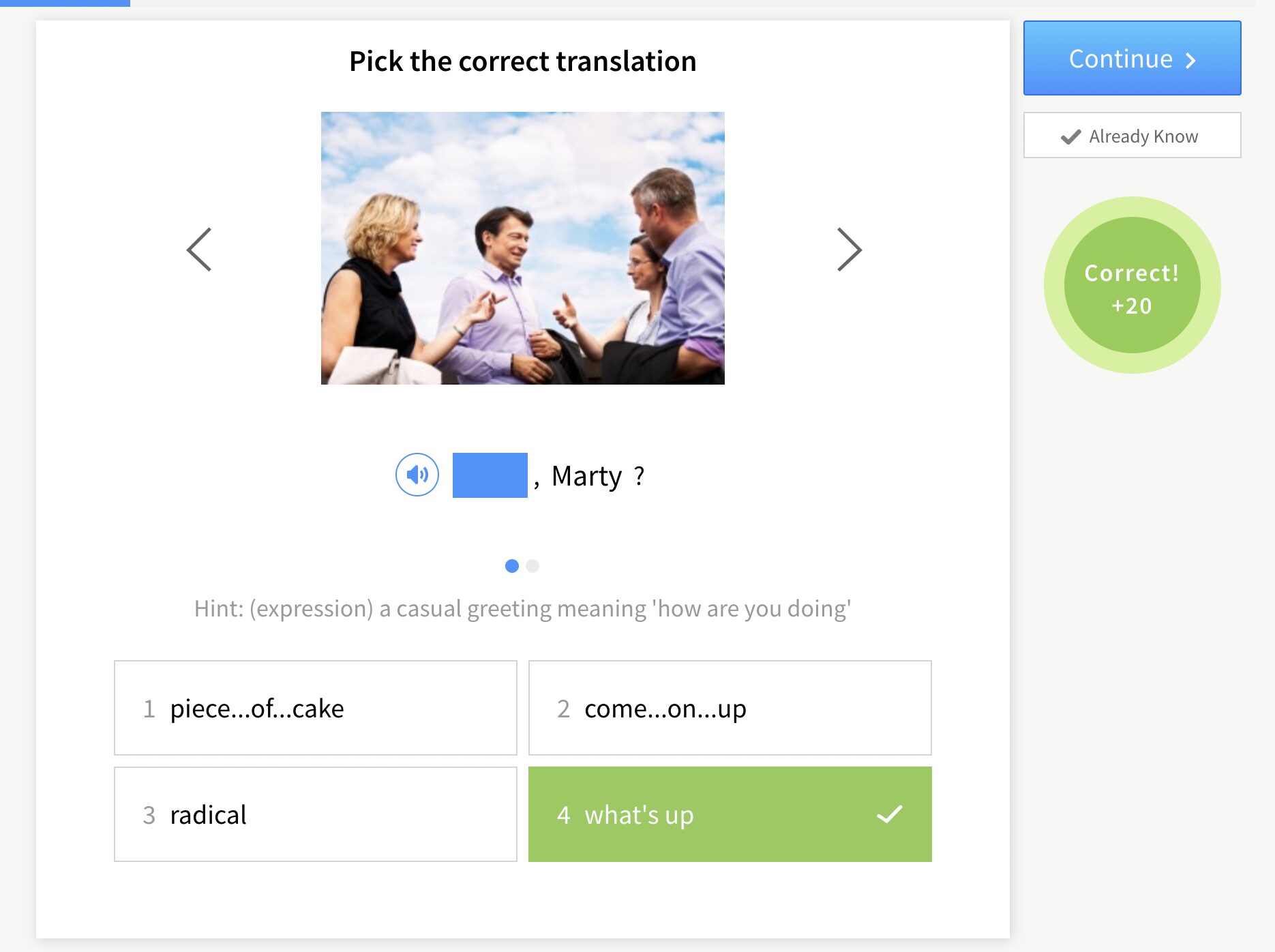5 Ways of Assessing English Language Learners Without Tests

Seeing growth and improvement can be a huge motivator for ELL students, but you can’t see growth if you don’t measure it. That’s why no great class is complete without some way of assessing students so you can also plan future lessons.
However, tests aren’t always accurate ways to measure their skill levels. Instead, let’s look at five alternative ways to assess your ELL students, and examples of what each might look like.
Download: This blog post is available as a convenient and portable PDF that you can take anywhere. Click here to get a copy. (Download)
1. Rubrics and Performance Criteria
Using rubrics and performance criteria is a great way to assess a variety of student work. It’s usually based on language proficiency and academic progression through work such as presentations, written assignments and reading activities. You can not only use these to grade your students, but to chart their growth over a set period of time.
Both tools feature a list of criteria or standards that students know you’re assessing. Rubrics show what is considered below level, at level and above level. A performance criteria can simply be a checklist of what to assess for each student. With either of these assessment tools, it’s important to develop your own, as assessments are based on the teacher’s judgment.
A tool like RubiStar is helpful, as it can show you sample rubrics other teachers have developed, and anyone can modify them for their own use.
When creating rubrics or performance criteria, make sure that what you’re assessing is clear and fair from the beginning. As well, don’t assess too much at once, as it’ll not only overwhelm you but your students as well. If it helps, ask other teachers how they created their rubrics, or simply have someone look over yours to see if it looks okay.
You can even take it a step further by bringing FluentU into the classroom.
FluentU takes authentic videos—like music videos, movie trailers, news and inspiring talks—and turns them into personalized language learning lessons.
You can try FluentU for free for 2 weeks. Check out the website or download the iOS app or Android app.
P.S. Click here to take advantage of our current sale! (Expires at the end of this month.)

2. Oral Presentations or Performances
Many students who have test anxiety might get nervous because their reading or writing skills aren’t very good. That doesn’t mean, however, that they aren’t proficient in oral skills.
Assessing oral presentations or performances typically include role-plays, interviews, oral reports and summarizing/paraphrasing pieces of text. When used on an ongoing basis, it’s a great way to monitor a student’s comprehension through a longer period of time.
Here are some ideas to incorporate oral presentations or performances as part of your assessments:
- Role-plays: Role-plays can be used to assess students individually or as a group. Some ideas include having students write a play and performing it or even having the students teach the teacher as part of a review class.
- Interviews: This type of assessment is very helpful if you have students that are early English learners. To help test students on content knowledge, try to use a lot of visual cues. For example, have students pick from a pile of pictures, and ask questions to elicit responses from them. You can assess the student based on vocabulary used or comparing concepts.
- Describing/explaining/retelling/paraphrasing/summarizing texts: Instead of a written book report or summary of a piece of text, you can have your students retell the plot in front of the class or just to you. Other ideas can include asking the students to pick a character in the book and tell a story from their point of view, or even to describe their favorite part of the text.
When assessing oral work, it’s helpful to use a checklist of things to look for, such as pronunciation, volume, pace and content. Use the same checklist for the same types of oral presentations to see the progression over time.
3. Non-verbal Assessments
For students who are shy or aren’t as proficient in English, using non-verbal assessments is a great way to see a student’s academic progress. What you’re looking for in this type of assessment is their understanding of vocabulary.
Examples include:
- Charades: Give a student vocabulary words you’ve taught, and have them act it out to see if they understand what the word or concept is. You could even have them summarize a text by miming it.
- Pictures: You can ask students to draw or collect pictures to show their knowledge on a topic. For example, if you’re assessing a student on their knowledge of nouns, ask students to pick out pictures of nouns in a magazine. Pictures can also be used to assess reading comprehension. Students can read a paragraph and then draw a picture to show their understanding of the text. If the picture is mostly accurate except for a few details, it could be a vocabulary issue.
4. Written Assessments
Written assessments are a nice way to see how students can apply their knowledge of English over a wide variety of concepts. For example, you can use assignments to see just how well they understand a text, or even different forms of writing.
Some different ways to incorporate written assessments in your class include:
- Creative and structured writing assignments: Ask students to write a creative story, or even give them a writing prompt—where students read the beginning of a story and are asked to write the ending.
- Editing writing: Give students a piece of text with grammatical mistakes and ask them to correct it, to test their knowledge of grammar.
- Reading response logs: Give students a list of questions, such as how do they know a character is evil, or how would they change the ending of a story. When students are finished reading a book or article, have them write down the answers to these questions. Make sure to only assess for content, and not spelling or grammar, unless you specify to your students that you’re doing so.
- Content logs: Have students write down facts they learned about a text. You can also have them write what parts they didn’t understand. This is helpful for you to see if there are concepts you may need to reteach or review, particularly if a lot of students are confused about similar parts of the same text.
With writing, don’t assess too much at once. For a writing piece, you could assess just spelling, complete sentences or unity in paragraphs. Build it up to assess more than a few criteria once you see that your students have mastered what you have taught them.
5. Portfolios
Portfolios are powerful assessments and are used to gather various samples of student work to track their development over a period of time. In order to maximize the potential of using a portfolio as an assessment tool, you should regularly curate student work to include in them, and have scheduled conferences with students about their work.
You should also have a checklist of qualities that are important to showcase student achievement. Not only do you critique and assess the work, but so should the students. That way, they’re responsible for their learning and take more ownership of making sure they improve.
Material you can include in a portfolio can include the following:
- performance criteria or rubrics
- recording of oral presentations
- tests
- writing samples, drafts and final copies
- book reports
- interview checklists
In order to best assess a student, you should include more than one kind of student work in the portfolio. The work does not have to be the best work they’ve done, rather a wide variety is best. Based on your judgment, you can even ask students for their opinion as to what types of work they should include.
In a portfolio, you are looking for any type of improvement in their work. For example, if you keep a couple of a student’s writing pieces, look to see if their sentence or paragraph structure gets better. When looking at tests, see if their spelling tests, for example, have gotten higher scores over time. If you notice that they continually lack in certain skills, this would be the time to address it. You can either give the student extra support in class or find ways for them to practice with extra work at home.
Why Tests Aren’t an Accurate Way to Measure Performance
One of the most common reasons why teachers shouldn’t only use tests is because students may have test anxiety. What tends to happen is that students are so nervous when presented with a test that they don’t do as well. You then aren’t able to see what the student is really capable of. For ELL students, they can be extra nervous because not only do they have to recall information they’ve learned, but they may have to decipher what the test question is asking in the first place.
Also, tests really only measure what students can memorize or recall, not necessarily what work they can produce. For example, if you give a multiple choice test about vocabulary they learned, it really only tests if they understand one meaning of the word, and not necessarily whether they understand how to apply the same word in different contexts.
Another example would be oral skills. If students understand certain phrases you’ve taught them, they may not understand if another person outside the classroom says it, especially if that person has an accent.
If an ELL student is a little slower to read or decipher material (especially if they’ve had lots of support in their class), a time constraint on a test won’t give them sufficient time to complete the test. Just because a student didn’t finish a test, doesn’t mean they don’t understand the material. You then are left guessing as to whether or not your student actually understood what you were testing them on.
Tests aren’t bad, but they’re not the only way to assess student achievement.
If you use a wide variety of assessments, you’ll be able to portray an accurate picture of your student’s English abilities.
In turn, you, your students and their parents will be able to see their progress, which can greatly motivate students!
Download: This blog post is available as a convenient and portable PDF that you can take anywhere. Click here to get a copy. (Download)
And One More Thing…
If you’re like me and prefer learning English on your own time, from the comfort of your smart device, I’ve got something you’ll love.
With FluentU’s Chrome Extension, you can turn any YouTube or Netflix video with subtitles into an interactive language lesson. That means you can learn from real-world content, just as native English speakers actually speak.
You can even import your favorite YouTube videos into your FluentU account. If you’re not sure where to start, check out our curated library of videos that are handpicked for beginners and intermediate learners, as you can see here:
FluentU brings native English videos within reach. With interactive captions, you can hover over any word to see an image, definition, and pronunciation.
Just click on the word to see other example sentences and videos where the word is used in different contexts. Plus, you can add it to your flashcards! For example, if I tap on the word "viral," this is what pops up:
Want to make sure you really remember what you've learned? We’ve got you covered. Practice and reinforce the vocab from each video with learn mode. Swipe to see more examples of the word you’re learning, and play mini-games with our dynamic flashcards.
The best part? FluentU tracks everything you’re learning and uses that to create a personalized experience just for you. You’ll get extra practice with tricky words and even be reminded when it’s time to review—so nothing slips through the cracks.
Start using the FluentU website on your computer or tablet or, better yet, download our from the App Store or Google Play.
Click here to take advantage of our current sale! (Expires at the end of this month.)














